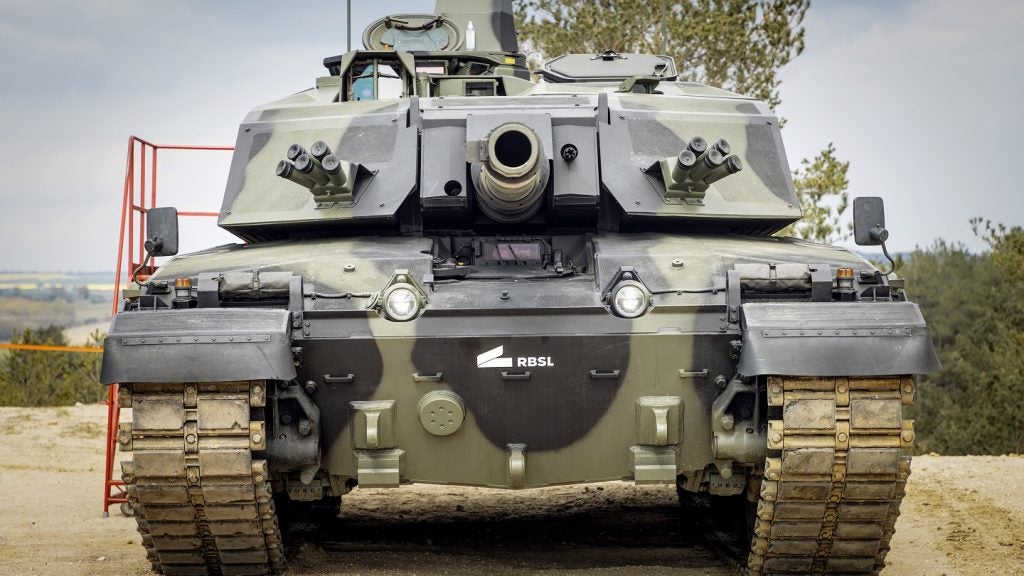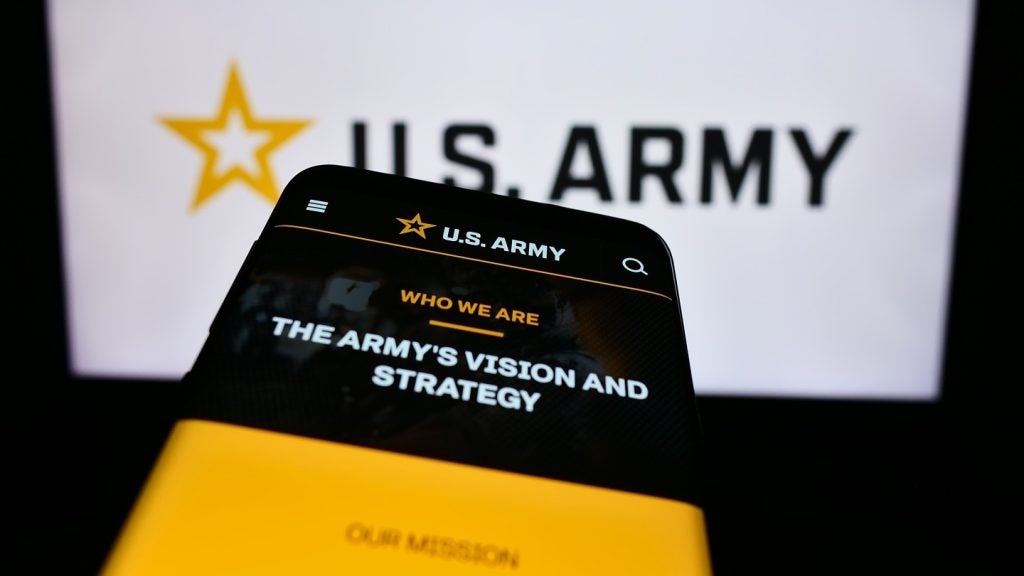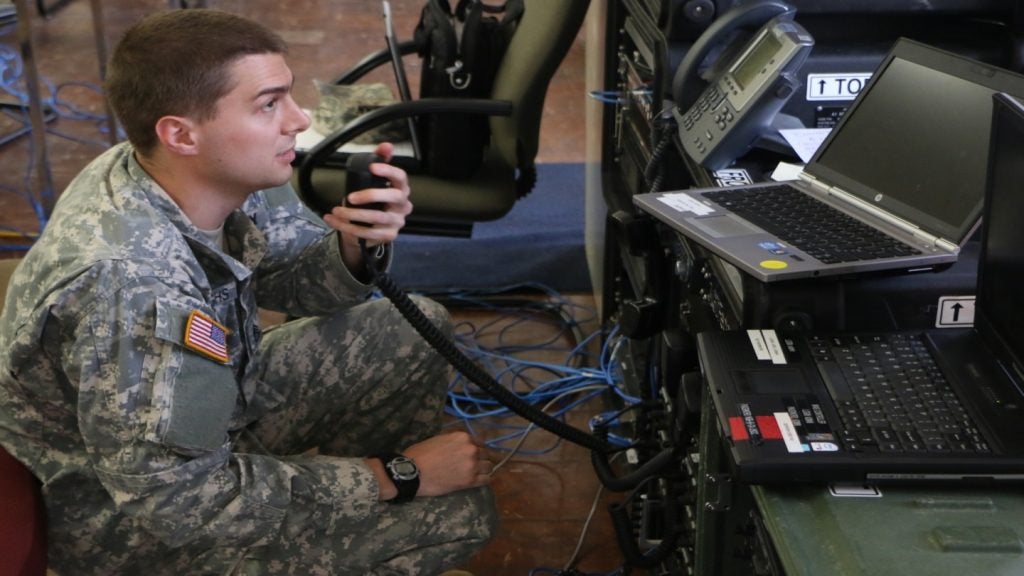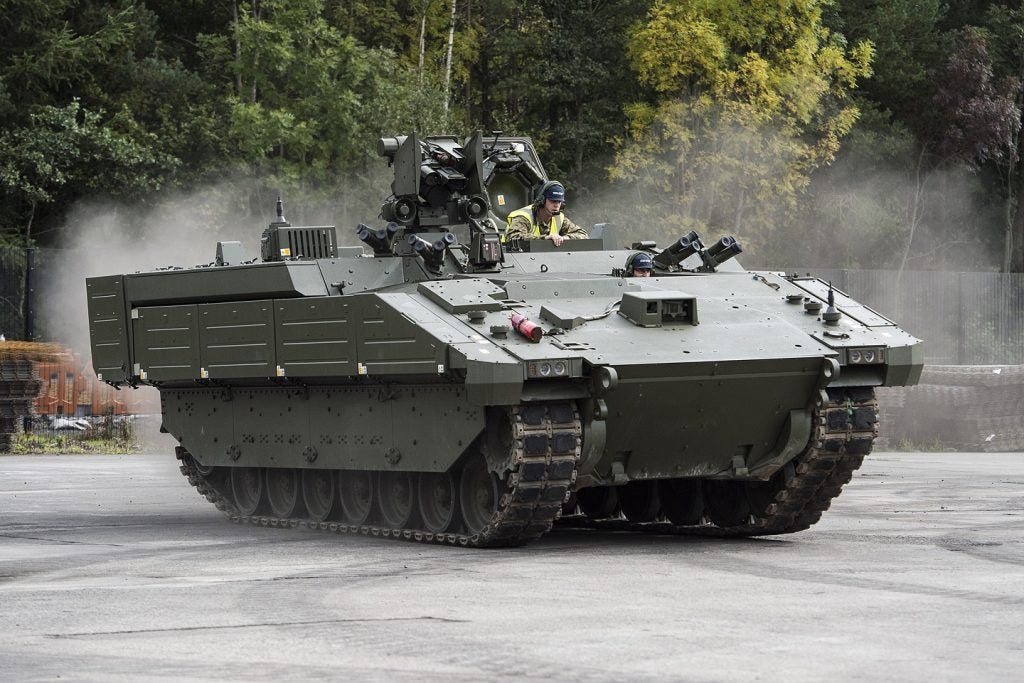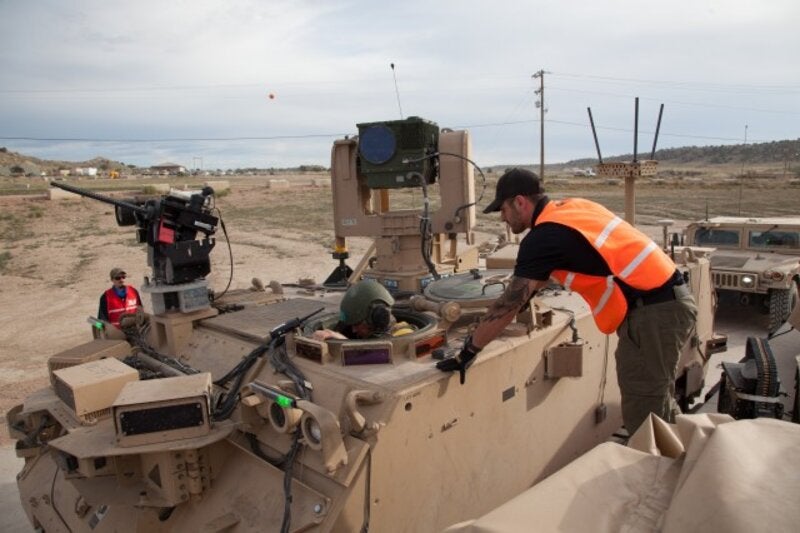
The US Army has demonstrated the capabilities of four robotic combat vehicles (RCVs) during platoon live-fire exercises.
The RCVs were accompanied by control vehicles known as Mission Enabling Technologies-Demonstrators (MET-Ds) during testing.
MET-Ds can accommodate six soldiers and are equipped with 360° situational awareness cameras. They also feature a remote turret fitted with a 25mm main gun and improved crew stations.
According to the US Army, the RCVs on M113 surrogate platforms are installed with 360° cameras and 7.62mm machine guns.
Soldiers from the US Army’s 4th Infantry Division controlled and manoeuvred the RCVs using two modified Bradley Fighting Vehicles as MET-Ds.
The RCVs were controlled up to a 2,000m range from the inside MET-Ds.
How well do you really know your competitors?
Access the most comprehensive Company Profiles on the market, powered by GlobalData. Save hours of research. Gain competitive edge.

Thank you!
Your download email will arrive shortly
Not ready to buy yet? Download a free sample
We are confident about the unique quality of our Company Profiles. However, we want you to make the most beneficial decision for your business, so we offer a free sample that you can download by submitting the below form
By GlobalDataThe exercises focused on determining the ability of the autonomous vehicles in enhancing the ground units’ lethality and efficiency.
Next-Generation Combat Vehicle Cross-Functional Team director Brigade General Richard Coffman said: “The ability (to spot enemies) was exceptional because that reduces the risk on our soldiers and allows us to remain in a covered and concealed position and make decisions.
During Phase II of testing, additional features are being planned for inclusion to the vehicles. This includes a new radio tether, an unmanned aerial vehicle (UAV), and target recognition capability.
This phase is planned to be conducted in Q1 of fiscal year 2022 at Fort Hood in Texas. Three platoons of robotic vehicle with control vehicles will take part in Phase II.
A decision will be taken to continue testing or not based on the Phase II results.
Coffman added: “This is about commanders on the battlefield and giving them more decision space and reducing the risk on our men and women.
“We go into the nastiest places on earth, and these robots are absolutely going to do that in the future. We’re not there 100% yet.”



